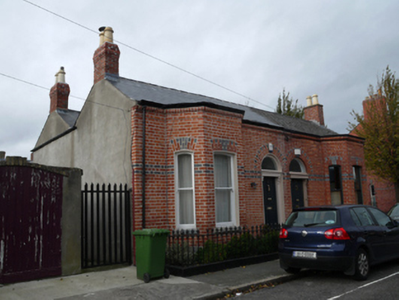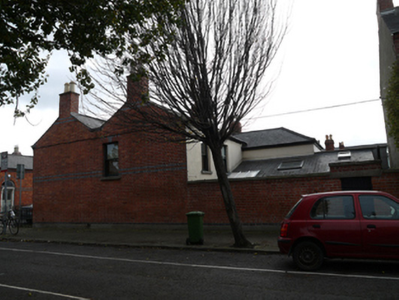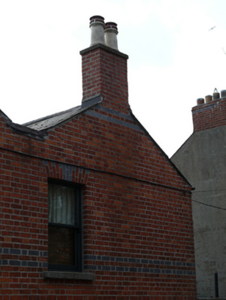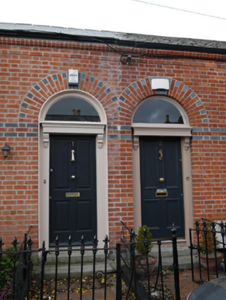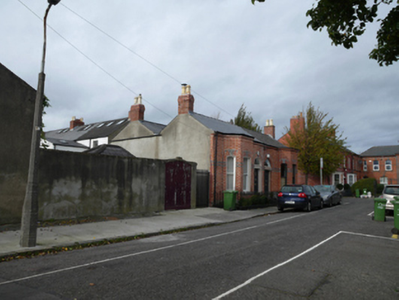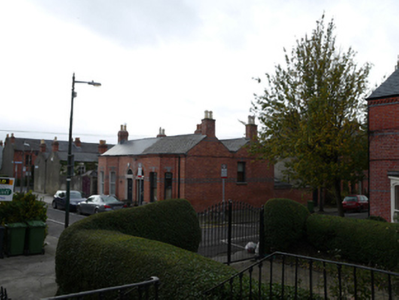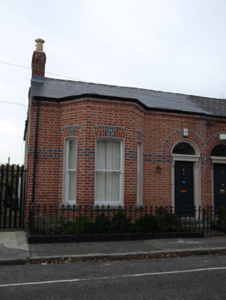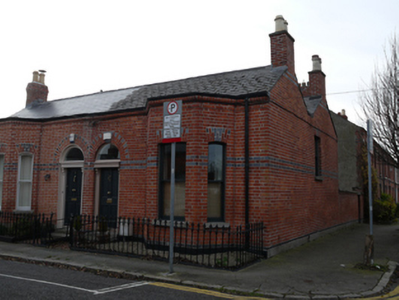Survey Data
Reg No
50080896
Original Use
House
In Use As
House
Date
1870 - 1880
Coordinates
315098, 232933
Date Recorded
28/10/2013
Date Updated
--/--/--
Description
Pair of semi-detached double-pile two-bay single-storey houses, built c.1875, having flat-roofed canted bay windows to front (east) elevation, and later extensions to rear elevation. M-profile pitched artificial slate roofs having bull-nosed red brick eaves course and red brick chimneystacks. Red brick walls laid in Flemish bond having black brick courses. Rendered walls to south elevation. Segmental-headed window openings to bay window having black brick voussoirs and cut granite sills. Square-headed window opening to north elevation. One-over-one timber sash windows. Round-headed door openings having black brick voussoirs, plain fanlights over friezes supported by fluted brackets to door surrounds, with timber panelled doors apporoached by cut granite entrance steps. Area to front enclosed by cast-iron railings.
Appraisal
This short terrace retains its early form and character. The bay window adds interest to the front elevations, while the use of red brick with black brick detailing is found in other terraces on Saint Kevin's Parade, creating continuity in the streetscape despite the variety of house types. The construction of new residential streets in this area coincided with the immigration of Jewish communities fleeing pogroms in Europe in the late nineteenth century, and the area became known as Little Jerusalem. Thom's Directory of 1900 notes many Jewish surnames among the householders of Saint Kevin's Parade, and the Jewish Encyclopedia of 1906 notes a 'hebrah' or minor synagogue on the street. James Joyce's Ulysses refers to fictionalised characters living in this street, including Moses Herzog the one-eyed pedlar.

